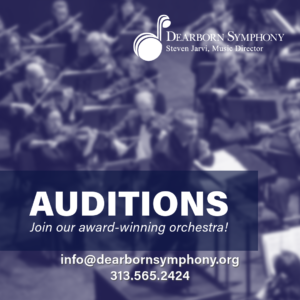Orchestra members are paid professionals, many of whom are members of their local unions.
To schedule an audition for a position in the Dearborn Symphony, contact the Dearborn Symphony at johnh@dearbornsymphony.org or 313.565-2424.
Upcoming Auditions:
Check back later for updates
Substitutes
Contact the office at 313.565.2424 or johnh@dearbornsymphony.org.

